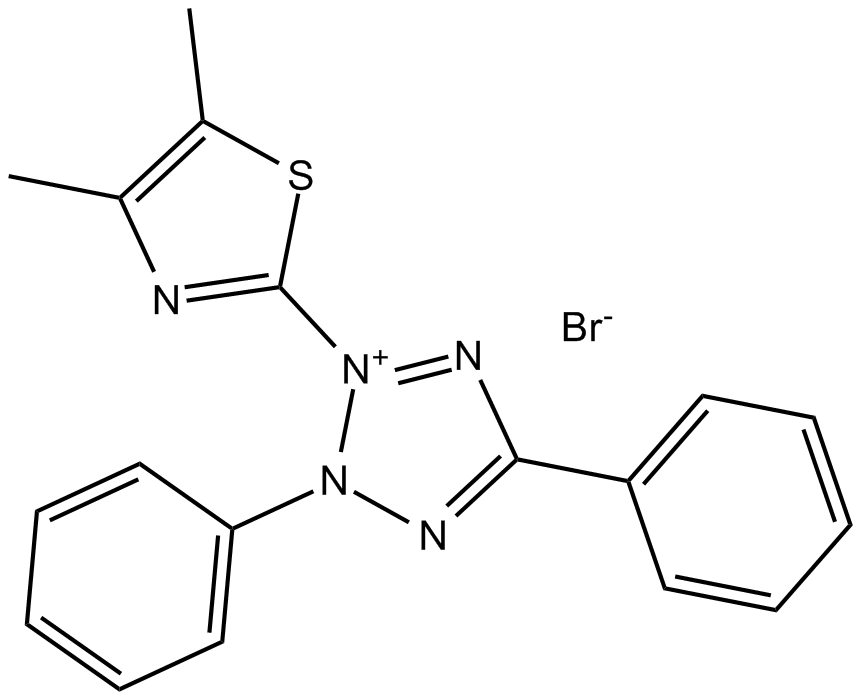MTT (Synonyms: Methylthialazole Tetrazolium, NSC 60102, Thiazolyl Blue, Thiazolyl Blue Tetrazolium Bromide) |
| カタログ番号GC14731 |
MTT(MTT)は、細胞増殖を測定するために広く使用されている比色試薬です。
Products are for research use only. Not for human use. We do not sell to patients.

Cas No.: 298-93-1
Sample solution is provided at 25 µL, 10mM.
MTT (3-(4,5-Dimethyl-2-thiazolyl)-2,5-diphenyl-2H-tetrazolium bromide) is a reagent used in the measurement of in vitro cell proliferation.
Tetrazolium salts have been the most widely used tools in cell biology for deternining the metabolic activity of cells ranging from microbial origin to mammalian. Fractionation studies in mammalian cells indicate that NADH, the reduced pyridine nucleotide cofactor, is responsible for most MTT reduction, which is further supported by studies with whole cells.
In vitro: It has been found that MTT reduction was associated not only with mitochondria, but also with the cytoplasm and nonmitochondrial membranes including endosome/lysosome compartment and plasma membrane. The net positive charge on MTT appears to be the predominant factor involved in their cellular uptake through the potential of plasma membrane. However, the second generation tetrazolium dyes (XTT, WST-1 and to some extent, MTS) that form water-soluble formazans and require an intermediate electron acceptor for reduction, are characterised by a net negative charge and therefore are largely cell-impermeable [1].
In vivo: MTT currently is only used for in vitro cell proliferation determination and there is no in vivo study reported.
Reference:
[1] Berridge MV,Herst PM,Tan AS. Tetrazolium dyes as tools in cell biology: new insights into their cellular reduction. Biotechnol Annu Rev.2005;11:127-52.
Average Rating: 5 (Based on Reviews and 26 reference(s) in Google Scholar.)
GLPBIO products are for RESEARCH USE ONLY. Please make sure your review or question is research based.
Required fields are marked with *




